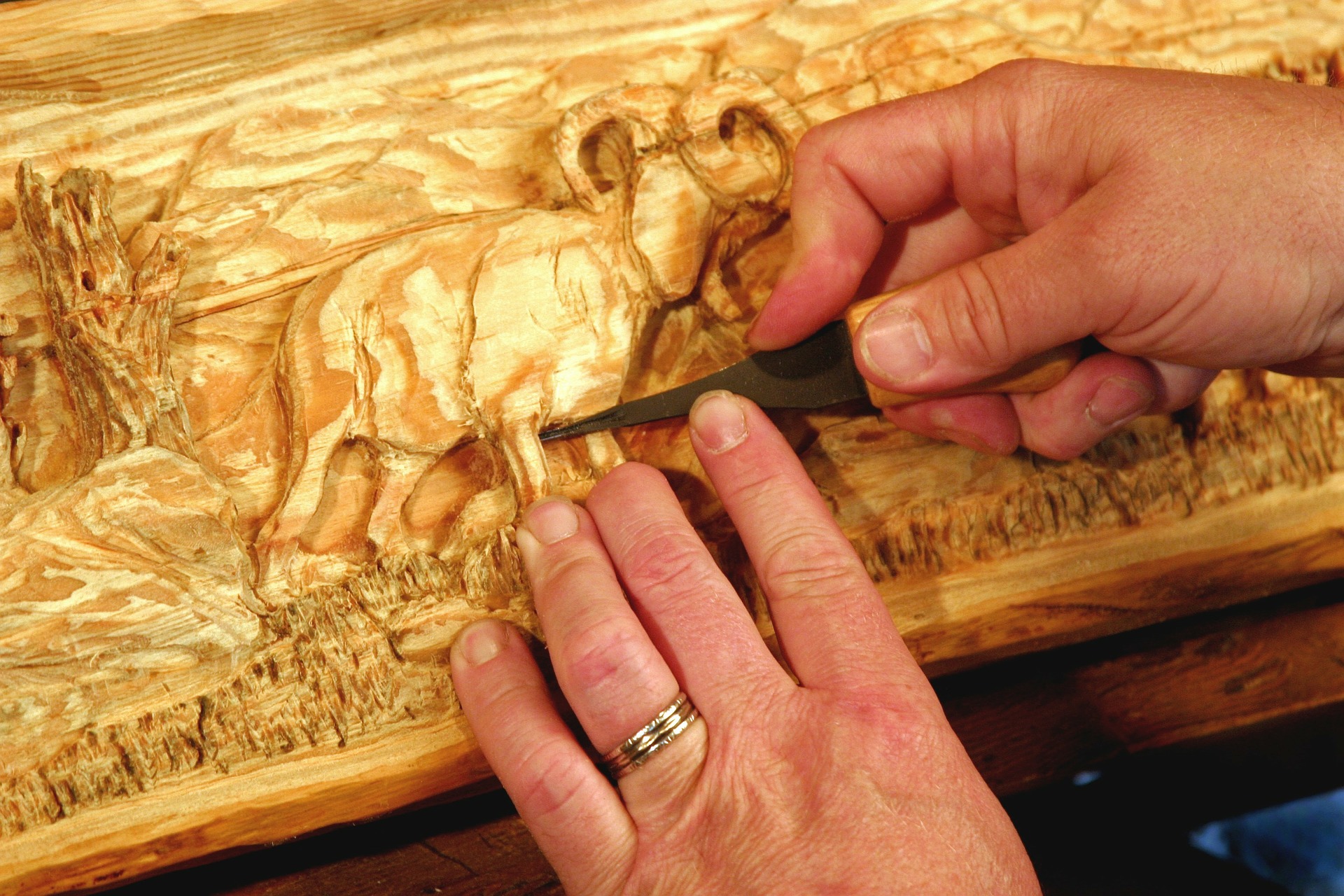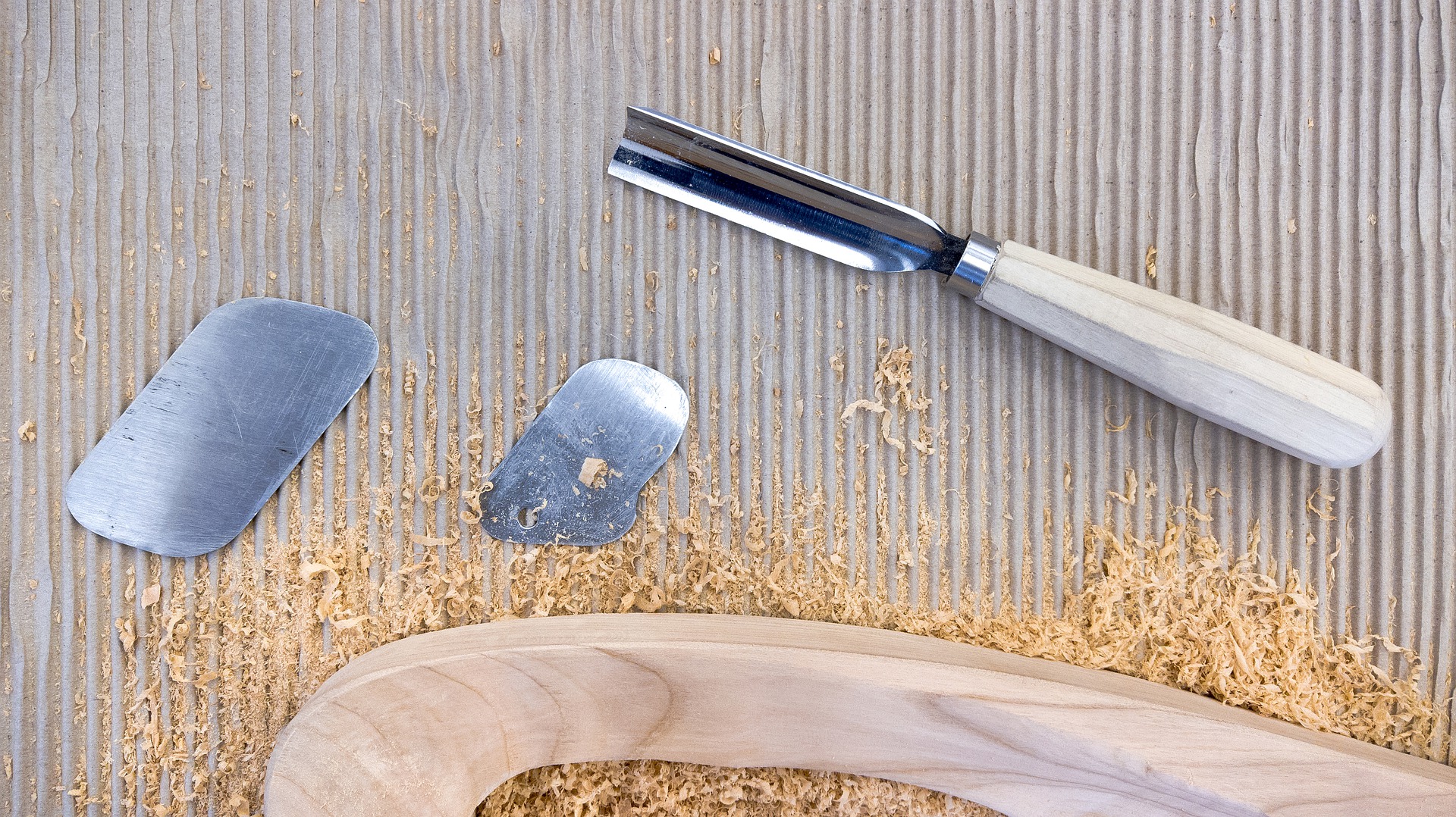Sandpaper Approach for Sharpening Carving Tools
If you’re wondering how best to sharpen wood carving tools, consider adding sandpaper to your arsenal. Sandpaper is an extremely affordable solution for sharpening wood carving tools,making any tool razor sharp in minutes.
40-to-50 grit sandpaper is coarse enough to use for knives that are very dull. 60-to-100 grit sandpaper is a good medium-grit option, whereas 120-to-220 grit sandpaper is a fine-grit option for knives that are only mildly dull.
To use sandpaper, you’ll want to slide your carving tool’s cutting edge across your sandpaper repeatedly at an angle (about 11 degrees). If a nickel can pass under it, you know you’ve got the correct angle. Once you’re done, test the carving tool by dragging its blade against one of your thumb nails. If you feel some resistance, this means the blade still has some imperfections, in which case you’ll need to repeat the blade sharpening process using a larger-grit-size sandpaper.
Leather Strop Approach for Sharpening Carving Tools
Sharpening wood carving tools is also possible using the hand stropping approach. Hand stropping involves using a flexible leather strip, or leather strop, to remove small burrs that are left behind after honing and grinding. The stropping strategy should be used only on knives that have already been sharpened, as its purpose is to further increase a blade’s sharpness.
Not sure how to sharpen wood carving tools using a strop? First, lay your blade flat on the piece of leather. Then, apply pressure to your blade and strop. Afterward, perform repeated strokes gently by moving your blade away from where you’re standing. When you see your strop begin to turn a black hue, this means that your blade is getting sharper.
Stone Approach for Sharpening Carving Tools
Consider sharpening wood carving tools, such as flat wood carving chisels, with a sharpening stone. Stones that are in the 400-to-600 grit range are ideal for initial sharpening. A stone that is between 2,000 grit and 3,000 grit is perfect for final sharpening or finer polishing.
To use a sharpening stone, you’ll first want to get your stone wet to ensure smooth gliding. Then, hold your blade against the stone at an angle (90 degrees), making sure that the cutting edge is facing down. Afterward, move your blade so that it is at a smaller angle to your stone (closer to 45 degrees). Finally, make the angle even smaller (about 22 degrees).
Next, draw your blade over your stone, going forward and then backward, to sharpen the carving tool. During this process, one thumb should be on your knife’s spine, and you should guide your blade with the other hand. Pressure should be applied when you’re moving your knife forward, and it should be released when you’re bringing your carving tool back toward you.
This process will eventually expose your knife’s wire edge, or burr—material that has been worn out. Once you see the burr form on your cutting edge’s opposite side, that’s when you need to start sharpening this side. Finally, you’ll have a sharp curving tool that’s ready to use.





